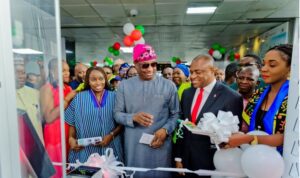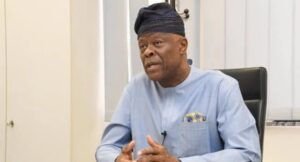Naira records second-worst quarter of depreciation in Q2 2022
The Central Bank of Nigeria (CBN) has made numerous attempts to defend the Naira, but the currency has massively declined by N29 in the second quarter of 2022.
This is indicative of the second-worst quarter depreciation in Nigeria, while the worst quarter was seen in Q3 2021 when the Naira fell by N44.
The Naira-US dollar exchange rate at the official Investors and Exporters (I&E) market has remained largely stable around the N420/$1 region.
On the other hand, the Naira is heading toward N650/$1 on the black market, which has continued its downward trajectory.
To defend the Naira, the Central Bank has introduced a slew of regulations, from barring the sale of dollars to BDCs to the RT200 scheme, which is designed to provide an N65 rebate on export revenues.
Nonetheless, the CBN intervention comes at a cost in terms of Nigerian foreign reserves, which have not been growing at the expected rate despite high oil prices.
On a year-to-date basis, the reserve has lost $1.37 billion from $40.52 billion in December 2021 to $39.16 billion in June 2022. In the month of June, the external reserve gained $671.63 million, following a $1.1 billion decline in the previous month.
The drop in forex supply contributed to the downtrend in the value of the local currency at the official market, amid the CBN’s interventions. Nairametrics took a cursory look at activities that give evidence to dollar scarcity in Nigeria.
In February 2022, Nigerian Banks sent out messages advising customers of reduced dollar limitson debit cards.
Furthermore, In May 2022, IATA published information suggesting that Nigeria was owing airline operators a backlog of over $450 million.On July 4th, the total amount of FX exchanged in the Investors and Exporters window was $47.56 million, a decrease from the previous trading session’s total of $78.86 million.
Forex turnover has averaged $67.67 million over the last three trading sessions, a significant decrease from the preceding three trading sessions’ average of $157.48 million.
The black market exchange rate closed on July 10, 2022, at N616/$1, indicating a N51 depreciation when compared to the N565/$1 on the 31st of December 2021.As at the 31st of March 2022, the black market rate was at N587/$1, which indicates a N29 decline in q2 2022.
The official exchange rate consolidated around the N425/$ region compared to N416/$1 at the beginning of the year.
In February 2022, the CBN extended the Naira for Dollar scheme from the IMTOs to the IEFX window. Specifically, the CBN released instructions that outline that it will facilitate payment of N65 for every US dollar repatriated and sold at the Investors and Exporters Window.
QThe CBN’s stated goal with the RT200 Program is to raise $200 billion in non-oil foreign exchange earnings over the next 5 years in an effort to save the value of the Naira.
Since the introduction of the Central bank of Nigeria’s (CBN) ‘Naira4Dollar Scheme’ in March 2021, the Naira rate has fallen by a whopping N127 (or 26%).
The World Bank has stated that the Central Bank of Nigeria’s multiple exchange rates, trade restrictions, and the financing of the public deficit continue to damage the business environment.
The Central Bank of Nigeria (CBN)stated that Nigerians’ import dependency is the cause of the falling Naira.
The apex bank urges Nigerians to adopt homemade products to boost Nigeria’s economy and stop the Naira from depreciating further in the parallel market, also Naira fell by N22 in the first quarter of 2022.




